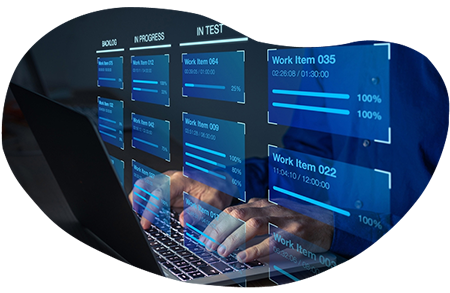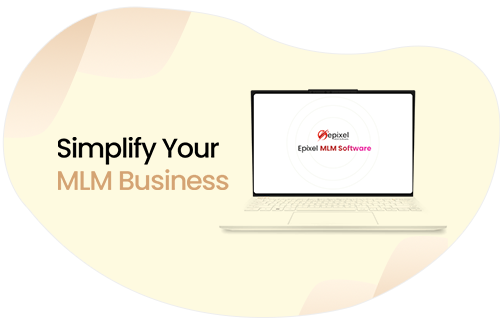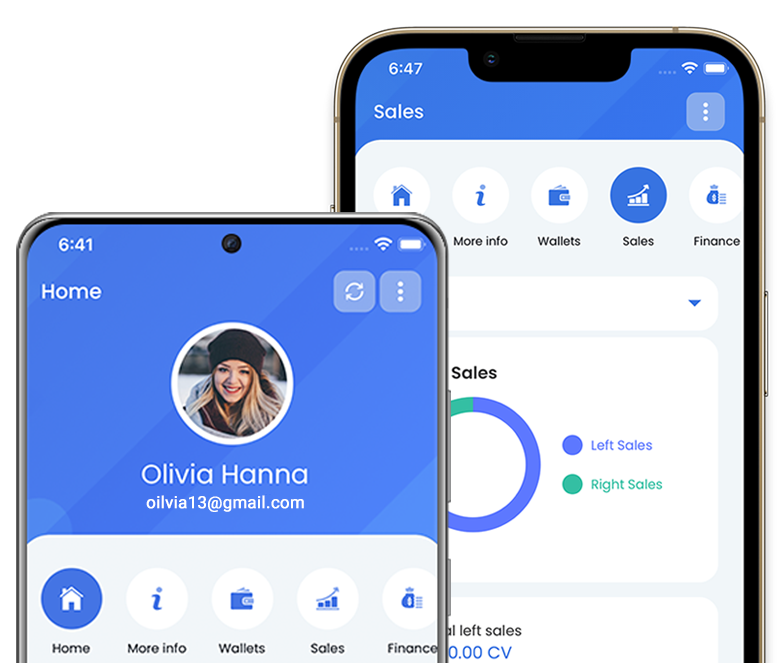If you are planning on expanding your MLM business, the most common things that come to your mind might be recruitment and products. However, like any other type of business, every direct selling brand needs the support of a seamlessly running back-office system. From documenting sales and controlling payments, to keeping track of teams and their work, they ensure everything works smoothly. In this blog, we will describe in detail how smart back-office solutions will enable you to move from a passive state to staying ahead in the market.
Back-office systems as a strategic command center
The common perception of back-office systems in multi-level marketing as simple administrative resources is quite misleading. Advanced network marketing companies are moving to adopt these as key decision-making entities at the corporate and distributor levels.
Advantages of back-office systems
- Unified intelligence hub: Take your back-office from a records management system and turn it into a decision-making tool.
- Early warning system: Develop methods that show possible problems within the organization before the problems affect your bottom line.
- Higher competitiveness: Using data integration to respond to changes in the market earlier than competitors who still use fragmented systems.
In general, top MLM marketers understand that gaining access to only basic back-office services is disadvantageous. Using advanced analytical tools will allow a company to detect certain market opportunities and trends, weeks before rivals relying on simple reporting software will detect them.
The modern back-office environment should work as your business brain. They should combine and analyze financial processing, team performance, and the company’s overall market dependencies into one combined display, which converts raw data into a successful plan of action. This enables one to make informed decisions rather than basing them on a single figure or a set of figures.
The coming of smart genealogy tools
Since genealogy tracking is one of the core aspects of MLM back-office, early innovators came up with the relationship mapping technique to further enhance this. This program is specifically designed to look for hidden loops in your organization.
Identification of relationship strength: Employ systems that would measure the state of upline-downline relations through communication factor and activity level.
Bottleneck identification: Identify gaps in areas of support and mentorship before this leads to loss of distributors.
Components: Integrated alerts implemented to generate e-mail notifications to distributors who may need more attention or appreciation.
It is always important to detect queuing in the upline downline relationships before it affects the number of people who will drop out from the program. These features of relationship intelligence help leaders to strengthen weak relations in an organization, rather than fixing attrition afterwards.
Compensation visualization
Several studies state that the degree of openness of the compensation plan has significant influence on the distributor motivation levels. While traditional back-office systems only suggest or provide the earnings in detailed reports, the advanced platforms provide real-life incentives of career advancement through use of techniques such as bar, levels, or use of badges.
Colleague interactive earnings projection: Using applications that can show distributors how certain actions pave way for returns on their compensation.
Opportunity maps: Set up personal dashboards, which illustrate each distributor’s best plan to attain the next rank.
When your team members understand where they aim at getting to in the organization’s pay structure, individuals move from act of randomness to purposeful activity. This makes vague compensation plans into clear roadmaps of achievement. This also boosts distributor tenacity during phases that might be otherwise tiresome in business building.
It’s advisable to design promotional tools that enable distributors to input various varieties of business-building activities and see the potential earnings earned in each. These tools are especially useful to determine which activities (recruiting, acquiring clients, or increasing personal volume) will help distributors increase their compensation to the greatest extent, depending on the distributor’s rank within your compensation structure.
Mobile-first training integration and return on measured criteria.
Micro-learning utilization: Divide the overall training material into smaller units, which can be delivered at specific time intervals.
Adaptive learning paths: Develop training sequence using artificial intelligence by determining the distributor learning styles as well as organizational development requirements.
Sophisticated solutions can detect situations where distributors continuously visit certain product information without making purchases. This is a clear sign of lack of confidence. Delivering tailored distributor training at these specific time points can put knowledge constraints into usage and sales situations, without needing the distributor to go in search of training materials.
Supply chain transparency
The demand of consumers towards ethical sourcing and sustainable products is one of the greatest opportunities for MLM companies engaging in supply chain management. Modern back-office systems contain blockchain certification of the product distribution, including ingredients for product production along with the manufacturing process, for distributors and customers.
Blockchain verification: Utilizing completely traceable record keeping system in blockchain. This will enable distributors to convince doubtful prospects about the validity and quality of some products.
Storytelling tools: Offer distributors clear supply chain maps and producers’ stories that translate product specifications into consumers’ emotions.
Ethical sourcing certification: Having systems that can automatically produce compliance certificates for more attentive buyers.
This transparency functionality is beneficial for distributors while responding to the increasing population that is concerned about the sustainability and origins of products. On the same note, it also translates your product story from mere marketing pitches into credibility; an aspect that has been long problematic in the industry.
Cross-platform data synchronization
The fragmentation of social media marketing, customer engagement and back-end CRM have cost distributors their efficiency over the years. Today, there are systems that allow bi-directional exchange of information, hence giving an integrated platform that eliminates any repetitive work.
Omnichannel integration: Incorporated systems that ensure that the interactions between the customers and the companies are initiated in various channels, such as social media, e-mails, texting or through back-office.
Hearable control: Use voice in operations in conversational forms, to ensure distributors work with records, query status or place an order using voice commands.
Bulk follow-up: Continue engaging your prospects automatically without the need for the distributor having to send out manual follow-up e-mail.
It should be noted that the prospective customers are connected across multiple methods of communication, which makes it highly administrative. Such systems ensure all of the interactions the prospect has with you are in the same database. As a result, cross-selling follow-up has no data-entry burden, which often causes otherwise solid distribution to restart the tiresome process of questioning the sales effort.
Predictive analytics to forecast team performance
The traditional systems provide only historic activity recording. Whereas advanced back-office systems use predictive modeling of patterns of distribution that are yet to take place. These analyze signals from thousands of distributors to find opportunities and threats within the systems of the organization.
Attrition warning systems: Employ indicators showing early signs that a distributor is disengaged or thinking of leaving, 2-3 weeks prior to his resignation.
Advancement opportunity alerts: Use talent analytics, which are tools used in determining distributors with pattern similar to those who have been productive in the past.
Time management: Incorporation of leadership recommendation systems that will determine where leadership time is most effective towards organizational development.
Sophisticated solutions are able to notice weak signals of distributors’ inactivity patterns. This includes reduced login frequency, shorter time spent in the platform and decreased inter-team interaction, which is a clear indicator of a distributor’s intention to leave.
The legal environment in direct selling is changing at an incredible pace, raising legal concerns among the members involved in direct selling companies and independent distributors. The modern back-office systems contain compliance monitoring features, which include analyzing text created by the distributors in their promotional materials, presentations, and even social media posts.
Real-time compliance scanning: Adopt measures that should scan for compliance problems with content distributed by distributors prior to publicizing the content.
Remedy suggestions engine: Implement programs that not only highlight potential compliance concerns but offer specific alternatives that convey the same intensity of the message without breaking the rules.
Compliant image/content libraries: It allows creating effective promotional materials, adhering to compliance standards.
Such compliance instruments safeguard the company and distributors from making possibly inaccurate statements while endorsing unity across the organization. Others are more advanced in that instead of raising a flag for a violation, they suggest solutions to avoid those violations and enhance compliance as an educational tool.
The implementation roadmap
It is recommended that the change to your back-office system should be carried out in a sequential manner, not simultaneously. First, start with basic finance and genealogy since the platform needs to be operational and strong to support the features.
Implementation plan: Basic functionalities shall be implemented first, then subsequently build up functions and features as the organization gets ready and when functionalities are deemed most important.
Distributed testing methodology: Establish many testing groups that cover various aspects of the distributors such as the demographics, level of technical familiarity, and business traffic.
Syllabus: Possible plans for effective training and communication for the psychological barriers to technology transformation.
Some of the successful ones include distributed testing groups that include distributors of different demographics, to ensure intuitive usability across the organization. Distributors should be chosen as representatives of different technological proficiency, business loads, and team organizations to obtain the necessary feedback during the use of the solution’s various phases.
Discover how we build resilient businesses with advanced MLM functionalities
Conclusion
Back-office system has moved from an obligatory operational need to a competitive advantage factor. Only the organizations capable of identifying and utilizing these platforms as business intelligence tools will successfully set themselves apart from rivals in terms of recruitment, retention, and productivity of their distributors.
Position your organization for sustainable growth by leveraging those administrative systems that could be formulated as strategic assets in order to attract industry talent. It is also imperative to understand that the service quality offered for distributors is as important as product quality, as per the new standards. Therefore, always employ advanced back-office capabilities in your organization, way before they become a mandatory norm.









Leave your comment
Fill up and remark your valuable comment.